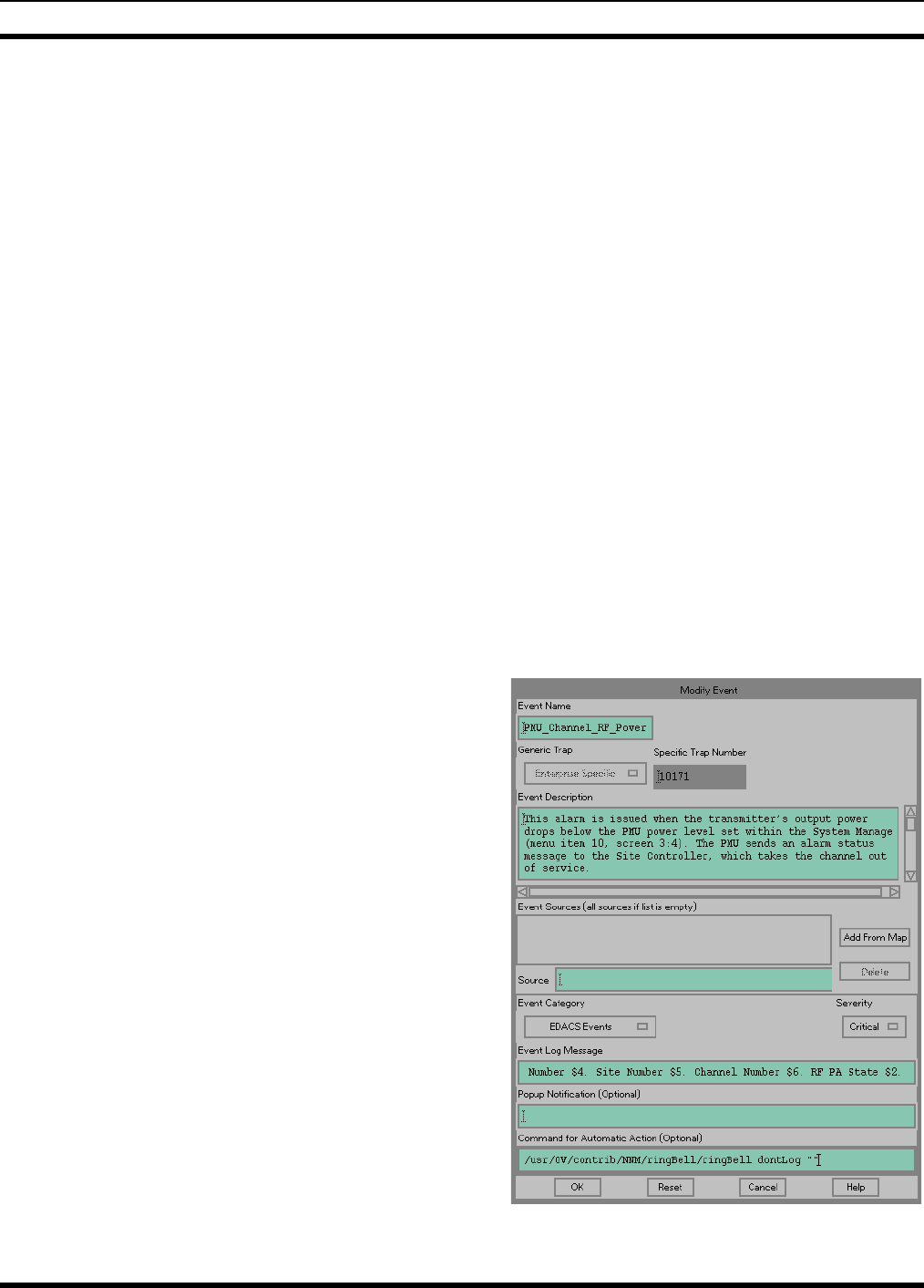
LBI-39169 USING OPENVIEW NETWORK NODE MANAGER
60
13.5 THRESHOLD TRAPS ON COLLECTED DATA
The user may specify the generation of an event based upon the value of a monitored performance parameter or that
parameter’s exceeding a user-defined threshold. For example, the user may wish to be notified via a popup message (or e-
mail) if the percentage of queued calls on a site reaches a certain value or goes above a specified threshold. This may be
accomplished by selecting Options -> Data Collection.
When a collected MIB value exceeds a threshold value, a trap is generated. A rearm mechanism exists to avoid
continuously generating events. This feature is a subset of the Collecting MIB Data feature. See OpenView NNM User’s
Guide sections titled Collecting MIB Data and Defining Thresholds.
13.6 VIEWING HISTORICAL TRENDS
Collected MIB data may be graphed later. The graph tool provided with OpenView Network Node Manager also allows
the user to manipulate the data. See the OpenView NNM User’s Guide section titled Viewing Historical Trends.
13.7 EVENT HISTORY
The OpenView Network Node Manager Event Browser can generate a report listing the past and present events. The
Event Browser updates in real time, i.e., incoming alarms associated with that object or its children are immediately updated
to the display. The report consists of entries describing the event source, time of occurrence, severity level, and type. The
user may filter the event history report based upon the source, severity level, a specified time range, and/or event type. Any
generated report can be saved to a user-specified file, and/or may be output to the printer. The Event Browser is
automatically opened when OpenView comes up. It may also be invoked from Monitor->Events: SNMP. All received event
entries that have been configured to be logged are written to a single file on the hard drive.
13.8 CUSTOMIZING EVENT MESSAGES AND ACTIONS
The event log message may be modified. In addition, the user
may add his own specific text to the event comment field. The
criticality level and category of the event may also be changed. In
addition to affecting icon color, actions may be associated with
events, such as paging, audible notifications, or other executables.
See the OpenView NNM User’s Guide section titled Defining
Actions for Events.
NOTE:
Updates of the EDACS application
will overwrite the event description (connect) field.
In the following example a burst of short beeps is associated
with an SNMP event:
1. From the OpenView menu bar, select the
Options-
>Event Configuration:SNMP
menu item.
2. Select the enterprise that the sources the event. For
example, System Manager, IMC Manager, PI, etc.
3. Select the event of interest.
4. Click on the Modify button, OpenView will display the
Modify Event dialog box as shown in Figure 37.
5. Enter the following UNIX command line in the
“Command for Automatic Action (Option)” field:
/usr/OV/contrib/NNM/ringBell/rin
gBell dontLog ""
Figure 37 - Modify Event Screen
